- Continue Shopping
- Your Cart is Empty
The Remarkable Story of a “Big Kid” Who Was Determined to Qualify for the Army
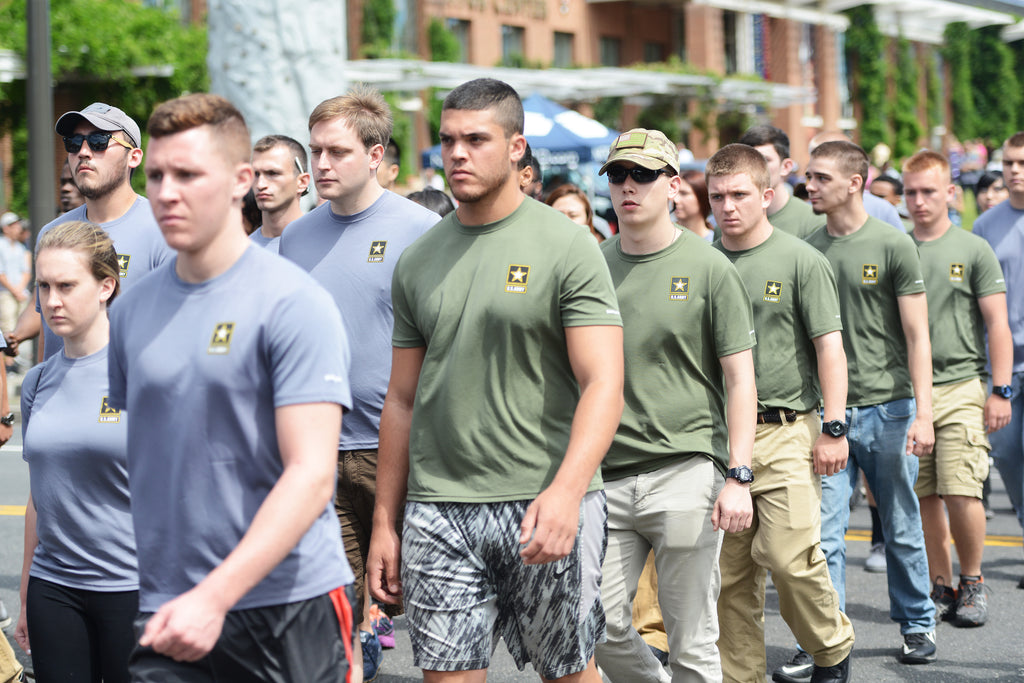
Obesity among young children and adolescents has troubled public health officials for the past decade. Today’s kids are fat and getting fatter, according to the Center for Disease Control and Prevention (CDC). This federal agency charged with tracking and mitigating disease in the United States recently noted that for children and adolescents aged 2-19 years:
- The prevalence of obesity was 18.5 percent and affected about 13.7 million children and adolescents.
- Obesity prevalence was 13.9 percent among 2 to 5-year-olds, 18.4 percent among 6 to 11-year-olds, and 20.6 percent among 12 to 19-year-olds.
- Hispanics (25.8 percent) and non-Hispanic blacks (22 percent) had higher obesity prevalence than non-Hispanic whites (14.1 percent).
- Non-Hispanic Asians (11 percent) had lower obesity prevalence than non-Hispanic blacks and Hispanics.
Because most new recruits must come from these recent high school graduates, this obesity trend also greatly concerns the U.S. military forces, especially the Army, which has made a fundamental change in its fitness testing. The six-event readiness assessment, called the Army Combat Fitness Test, is intended to replace the current three-event Army Physical Fitness Test, which has been around since 1980.
Beginning October 2020, all soldiers will be required to take the new gender- and age-neutral test. Before that, field testing set to begin this October will allow the Army to refine the test, with initial plans for up to 40,000 Soldiers from all three components to see it.
The Army’s Height and Weight Requirements

According to this article, the Army has strict height, weight and body-fat composition rules for recruits and the allowable measurements vary by age and gender. For example, a 5-foot-6-inch woman must weigh at least 117 pounds but cannot weigh more than 155 to 161 pounds, depending on age. A 5-foot-9-inch man has to weigh at least 128 pounds, but can’t tip the scales at more than 175 to 188 pounds. Body fat can’t be more than 30 to 36 percent in women or more than 20 to 26 percent in men.
Recruits who fail to meet basic height and weight qualifications receive a body-fat calculation based on abdominal and neck measurements. For recruits who exceed allowable body-fat percentages, the Army has a monitoring program that mandates monthly weight loss. The service also gives overweight recruits personal counseling to help them create a fitness and nutrition routine.
While not overly rigorous, this weight requirement was a serious problem for one young man in Las Vegas, Nevada who was determined to join the Army. His story should serve as a wakeup call for other young men and women who have had 18 years of bad habits, making them unfit for military service.
A Big Kid Goes “All In” to Lose the Weight
Louis Pinto knew he wanted to join the Army and serve his country but he weighed 317 pounds, which is about 113 pounds too many to even be considered.
“My whole life I was a big kid,” Pinto said. “I played football in high school and I was a lineman. I was just one of those big old guys walking around campus. I guess I just got used to being big and not paying attention to that fat kid in the mirror.”
The Army recruiter who met with Pinto offered a challenge. “If you go to work and try to lose the weight, I will help you,” he said. “In the first couple of weeks of exercise and dieting, he lost about 10 pounds. I knew he was trying.”
Pinto dedicated the next 7 months to losing more than 110 lbs. Now, his recruiter calls him Private Pinto because Luis did it – and now he says he’s ready.
"Knowing that you're about to leave your family and there are sacrifices but to know what you're doing is for the better of you and for your future. That overtakes everything,” said Pinto. “You're doing something important for the world."
To watch Louis Pinto’s inspirational quest to lose his excess weight and serve his country, click on this news report.
Get Ready for Greater Fitness Demands in the Army
In addition to meeting the current height and weight requirement, young men and women who want to serve should be aware that the U.S. Army is placing much emphasis on physical fitness. The ACFT is more demanding than any other branch of the military and it will be fully implemented by October 2020.

How to Train for the Army Combat Fitness Test

As inevitable as the sound of reveille every morning, the Army Combat Fitness Test (ACFT) is set for implementation in October 2019. In anticipation of this date, the field-testing continues and Army fitness trainers are learning how to train soldiers to meet this challenge.
The new ACFT is designed to better prepare soldiers of both genders for combat tasks, reduce injuries and lead to ample cost savings across the service. The six-event readiness assessment, (https://www.army.mil/article/208189/), will replace the current three-event Army Physical Fitness Test, which has been around since 1980.
In conjunction with the preparation for this significant change in fitness policy, the U.S. Army has launched a website that helps to clarify this mission. It notes that the ACFT will “better connect fitness with combat readiness for all soldiers.” The site outlines the objectives of the new test:
- Improve soldier and unit readiness
- Transform the Army’s fitness culture
- Reduce preventable injuries and attrition
- Enhance mental toughness and stamina
Rally Fitness: A Long History of Improving Military Fitness
In response to this change in the Army fitness test and the training that will be necessary for soldiers to meet these rigorous requirements, Rally Fitness has developed an Army Combat Fitness Test Equipment Package. This package was designed by Rally Fitness, known for its rugged CrossFit and high-use fitness facilities equipment, to help soldiers train and test administrators to accurately assess the fitness of Army soldiers.
If you would like more information on the Rally Fitness Army Combat Fitness Test Equipment Package, click here for more information.
Tips on Training for the ACFT
There are six events in the new test and each has its own training requirements. Here are some training tips for this challenging test.
#1 Three Repetition Maximum Deadlift
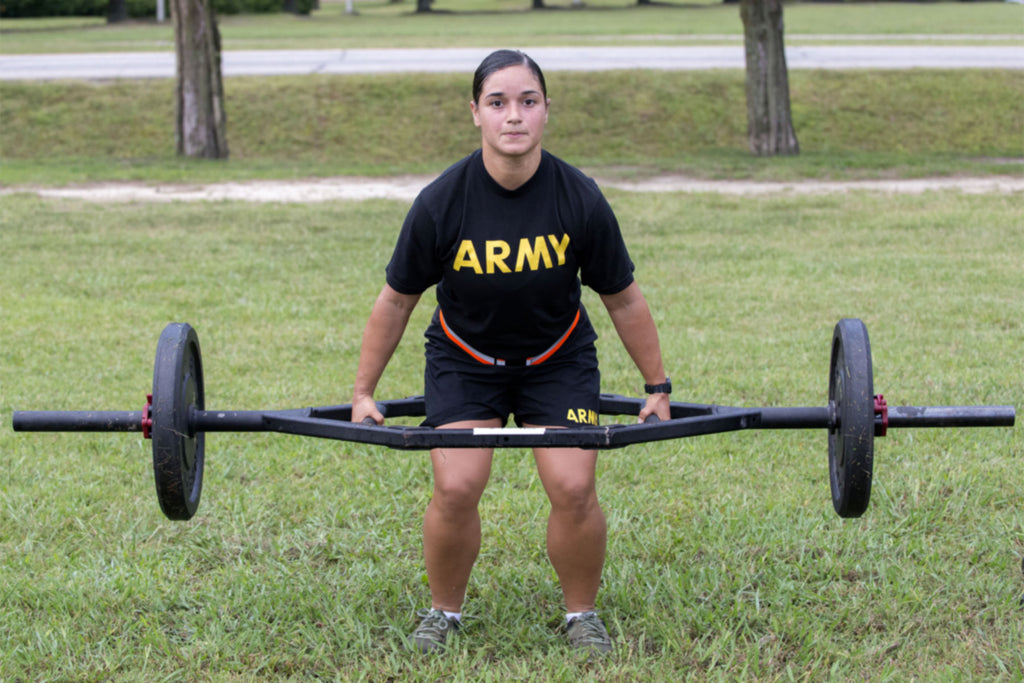
According to the ACFT website, “The Three Repetition Maximum Deadlift (MDL) event represents movements required to safely and effectively lift heavy loads from the ground, jump, bound and tolerate landing. It requires well-conditioned back and leg muscles and helps Soldiers to avoid upper and lower back injuries caused by moving long distances under heavy load.”
Here are three videos to help soldiers train for this event:
#2 Standing Power Throw
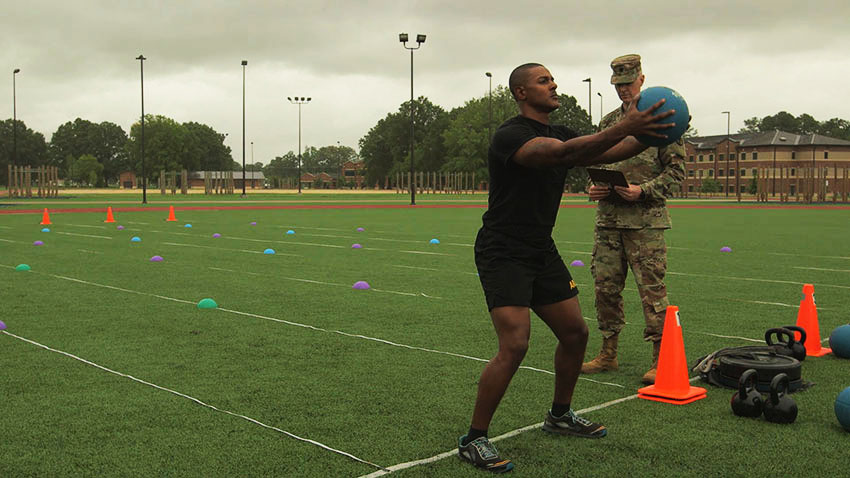
According to the Army the Standing Power Throw (SPT) event represents tasks requiring quick explosive movements to maneuver equipment and personnel.
Here’s how to train for this event:
#3 Hand-Release Push Up
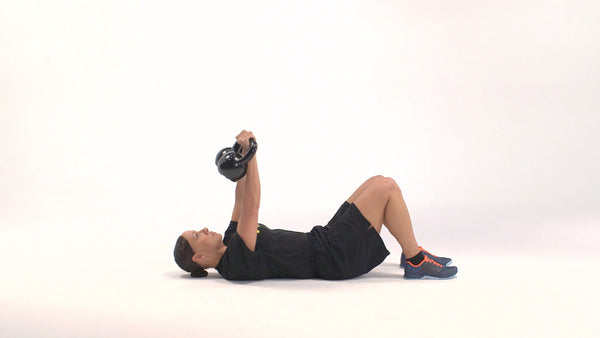
This event consists of the soldier completing as many push-ups as possible in a two-minute time period. This is an upper body endurance test that represents repetitive and sustained pushing used in combat tasks.
Here’s how to train for this event:
#4 Sprint-Drag-Carry

According to the website, The Sprint-Drag-Carry (SDC) is a test of strength, endurance, and anaerobic capacity, which are needed to accomplish high intensity combat tasks that last from a few seconds to several minutes. It involves 5 x 50 - meter shuttles for time - sprint, drag, lateral, carry and sprint.
Here’s are some video tips on training for this event:
#5 Leg Tuck
“The Leg Tuck (LTK) assesses the strength of the soldiers grip, arm, shoulder and trunk muscles. These muscles assist soldiers in load carriage and in avoiding injuries to the back.” The event involves completing as many leg tucks as possible in two minutes; maintain a relative vertical posture while moving the hips and knees up and down without excessive swinging or kipping.
Here’s how to train for this event:
#6 Two-Mile Run
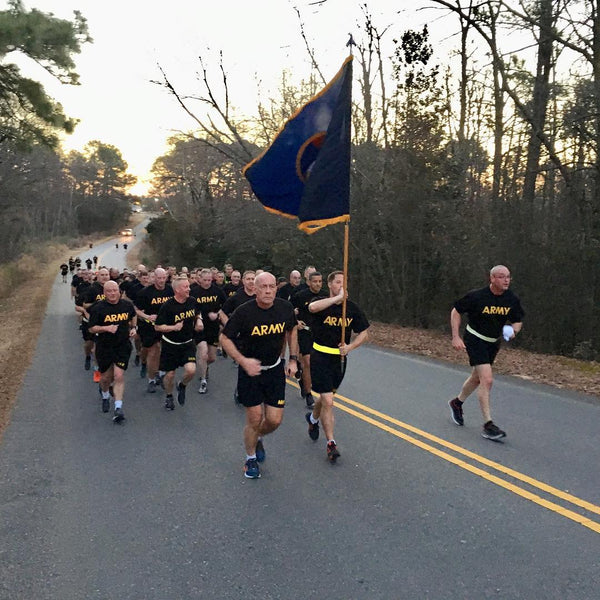
This event is a two-mile run for time. It measures aerobic endurance, which is required for conducting continuous operations and ground movements on foot. Higher aerobic endurance allows the body to recover quickly in preparation for executing other physically demanding tasks that may arise during a ground movement, such as reacting quickly to enemy contact.
The best training tip for this event involves running...lots and lots of running!
Get Started Now!

What the New Army Combat Fitness Test Means for Female Recruits

One of the important aspects of the new Army Combat Fitness Test (ACFT) is that it is gender neutral. This means that women recruits are tested and judged by the same criteria as men. This is a big change for the Army and represents an awareness of the importance of women in combat.
The Department of Defense formally opened combat positions to women in 2016, but until now there were different physical standards for the two genders. Basically, the training and testing suggested that women were not expected to perform in combat at the same level as men. Even with this uneven playing field, the Army transferred more than 600 women into combat occupations and more than 70 are in training to become infantry officers in 2017.
Rally Fitness: A Long History of Improving Military Fitness
In response to this change in the Army fitness test and the training that will be necessary for soldiers to meet these rigorous requirements, Rally Fitness has developed an Army Combat Fitness Test Equipment Package. This package was designed by Rally Fitness, known for its rugged CrossFit and high-use fitness facilities equipment, to help soldiers train and test administrators to accurately assess the fitness of Army soldiers.
If you would like more information on the Rally Fitness Army Combat Fitness Test Equipment Package, click here for more information.
New Test Measures “Warrior Tasks”
According to this recent article “advances in the science of physiology led the U.S Army to reform their old PT training to more accurately measure and predict a soldier’s capabilities. The new Army Combat Fitness Test measures Warrior Tasks that gauge 10 components of physical fitness relative to a soldier’s actual duties in combat including; muscular strength and endurance, power, speed, agility, aerobic endurance, balance, flexibility, coordination and reaction time.
“Although the previous test was cost effective and required minimal equipment, it only measured two of these components; strength and endurance– which biologically, height and weight ratios gave males a general advantage. Push-ups, sit-ups and a timed 2-mile run could not precisely assess an individual’s overall fitness and health, never mind tell a soldier’s required preparedness for combat. Further, this test held individuals against a normative public standard compiled from thousands of previous test results. Physical fitness is not synonymous with talent or combat effectiveness, which is why the APFT (the former test) only predicted about 40 percent combat readiness for all servicemembers.”
This new test features 6 events measuring the 10 Warrior Tasks that are designed to replicate experiences soldiers might face while deployed. This includes: evacuating casualties from a vehicle, moving under and around obstacles and grappling in hand-to-hand combat.
A Soldier Against the Mission
At the risk of waxing too philosophical, the new AFCT is fundamentally changing the criteria for evaluating combat readiness in both women and men. With this new test, some have noted that it no longer compares a soldier to the theoretical, “average” soldier. Unlike with the previous fitness test, it is no longer a soldier versus to another soldier. It is a soldier versus the mission.
This thoughtful piece on the gender neutralization of the ACT notes, “The tasks, the assessment and the scoring hold each individual to the status of soldier and not to the status of male or female. Removing dated, rudimentary notions of fitness, the Army’s new model actually trains and prepares our service-members to serve which has shown a reduction in lower extremity injuries, heightened combative fitness and lower likelihood of injury when deployed. Further, implementing a healthier social philosophy, the ACFT measures physical fitness without marginalizing and segregating the strength of our soldiers through a gendered lens.”
Get Started Now!

The Rally Army Combat Fitness Test equipment package has everything needed for this new test, and it’s priced right
$2,395
Click here to order now
Getting a Taste of the New Army Combat Fitness Test: A Way for Soldiers to be “More Fit and More Lethal”

With the recent announcement of the new, more physically challenging Army Combat Fitness Test (https://www.army.mil/article/208189/) (ACFT), thousands of soldiers are getting a chance to test their mettle. Beginning October 2020, all soldiers will be required to take the new gender and age-neutral test. Before that, field testing began in October 2018 to allow the Army to refine the test, with initial plans for up to 40,000 soldiers from all three components to see it.
"The purpose of ACFT, first and foremost, is to make sure our soldiers are ready for the rigors of combat," Army Secretary Mark Esper told Military.com. "We do have to sort through all the policies that come with a physical fitness test. I will tell you though ... at the end of the day, if you can't pass the Army Combat Fitness Test, then there is probably not a spot for you in the Army."
Training With the Equipment Used in the Test is Critical

Because it is a radical departure from the previous Army fitness test, the ACFT requires soldiers to strengthen those muscles that may not have been used for years. It also involves getting used to the equipment, such as kettlebells, 10-pound balls, 90-pound sleds and the other testing equipment.
In response to the changes in the Army fitness test, Rally Fitness has developed an Army Combat Fitness Test Equipment Package. This package was developed by Rally Fitness, a company known for its rugged CrossFit and high-use fitness facilities, to help soldiers train for the test and test administrator to assess the fitness of these soldiers.For more information on the Army Combat Fitness Test Equipment Package, just click here. |
Even veteran soldiers, who work out regularly, are challenged by this new Army test. According to this article, Staff Sgt. Rebecca Alvarez, a 31-year-old military police NCO at Fort Leonard Wood, Missouri, was one of hundreds of soldiers who volunteered for the pilot test with no knowledge of the events.
"I was already in shape because I was a drill sergeant. So, I knew that I was going to perform well," said Alvarez, who now works in the S3 shop with 1st Battalion, 48th Infantry Regiment, supporting the basic training companies at Leonard Wood. "For me personally, the event that was the most challenging was the standing power throw, only because I didn't really know what part to exert my energy on, at what phase of motion; it was just a little awkward."
Future Soldiers are Also Getting Ready for the ACFT

Those college students who may have put on the “Freshman 15” and are members of the ROTC will soon be shedding some of those pounds as they begin training for the new Army fitness test.
According to the Army’s website, Maj. Gen. John Evans, commander of U.S. Army Cadet Command and Fort Knox, said he wanted to provide his ROTC instructors an opportunity to see and experience the possible challenges the new test will bring with it.
"Our soldiers need to be more fit and more lethal. The legacy Army Physical Fitness Test was not encouraging or motivating us to train the right way. This test incorporates a total body fitness aspect, it works all of the muscle groups required for combat tasks. So it really replicates some of the challenges that we have seen soldiers go through over the last 17 years of combat," he explained. " It's really a combination of what we've learned over the past 30 or 40 years from a physiological standpoint, taking those things we know Soldiers are going to have to do in combat, and combining those to build a training regimen that will support better overall fitness."
"What we are trying to do with the test is drive a culture of fitness in the Army. It's not changing the test for the test's sake -- it's changing the test so that we can drive change toward fitness," Evans added. "We are trying to change the culture, which is extremely important for Cadet Command because we are the people who bring in the bulk of the Army's officer force."
“This test is about how well you do against the Army standard”
According to Michael McGurk, director of research for the Center of Initial Military Training, the organization overseeing the new ACFT, when Army leaders announced that the ACFT would do away with gender and age scoring, "It kind of gave a wake-up call to everybody,"
“When you go in harm's way,” McGurk said, “The standard in combat is the standard for everybody. The old test, because it was normative-based data and male and female and aged, it was basing you on how well you do against your compatriots, your peers. This new test isn't about how well you do against your peers. This test is about how well you do against the Army standard."
The Army recently published the "Field Test Manual, Army Combat Fitness Test" and the "Army Combat Fitness Training Guide" to help leaders and soldiers understand how the ACFT will be administered and how best to prepare to meet the standard.
The test manual addresses the upcoming ACFT field test, involving 60 battalions, to finalize the test standards, uniform, preparation, equipment lists, event procedures and grading guidance.
The training guide offers soldiers alternative exercises to prepare for the ACFT to help strengthen the muscles needed for each event.
Get Started Now
The Rally Fitness Army Combat Fitness Test Equipment Package has everything needed for this new test, and it is priced right at $2,498.00. Click here to order.




